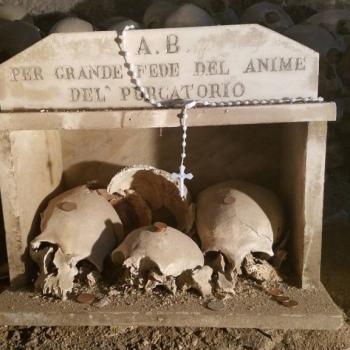On June 12, 1804, the edict of Saint-Cloud promulgated by Napoleon Bonaparte radically changed cemetery regulation and practices. Before the publication of the edict, it was customary to bury upper-class and deceased clergy inside the churches or in the adjacent land (the so-called “holy ground”). Wealthier families could afford to build sepulchers, altars and ornate chapels installed inside the places of worship of their religion (not only churches, but also temples and synagogues). The clergy, on the other hand, were buried in underground chambers, sometimes located below the central nave or behind the churchyard.
This practice caused two main problems – one of a sanitary nature, and the other of an ideological-social type. The presence of rotting corpses buried in often unmaintained tombs, located in the middle of densely populated city centers constituted a serious threat to public health. Furthermore, it was no longer tenable in a post-revolutionary era to tolerate the gap between the rich, destined for privileged burials, and the destitute, whose corpses were mercilessly thrown into and piled up in mass graves.
Through the imperial decree, Napoleon therefore forbade the burial of the dead inside public places such as churches and, by extension, imposed the ban on urban centers. New cemeteries had to be built at a safe distance from the cities (about 35-40 meters) on specially consecrated land and built in an elevated position, facing north in sunny and ventilated places, surrounded by walls at least two meters high. In addition to this, out of respect for the equality of all citizens, the new cemeteries would welcome everyone, without distinction among social classes. The management of the cemeteries would no longer belong to the Church, but rather to the civil administration.
The edict of Saint-Cloud was extended to Italy in 1806 and was immediately the subject of numerous public debates. The sanitary arguments were generally accepted, but intellectuals such as Ugo Foscolo and Ippolito Pindemonte complained that illustrious men would have to be interred next to criminals and that distancing the cemetery from the city center would lead to the gradual disappearance of remembering the souls of the dearly departed.
From then on, poor and rich alike would have to share the earthen plots reserved for eternal rest. Families belonging to the nobility and upper middle classes, deprived of the possibility of celebrating the mortuary splendor of their deceased in noble chapels specially dedicated to their prestigious surnames, resorted to funerary art by hiring famous sculptors to carve imposing allegorical statues in marble and celebrations with the aim of distinguishing themselves from the anonymous burials of the masses.
Thus, the first monumental cemeteries began to appear in the big cities. Among these, the monumental cemetery of Staglieno, located in Genoa, is one of the largest in Europe. Every year it welcomes hundreds of visitors from all over the world. Friedrich Nietzsche, Guy de Maupassant, Mark Twain, Ernest Hemingway and Evelyn Waugh are but a few of the many historical figures, writers, travelers, artists, and philosophers, who have recorded their visits to Staglieno, recalling the charm of this place of immortal memories engraved in marble or cast in bronze.
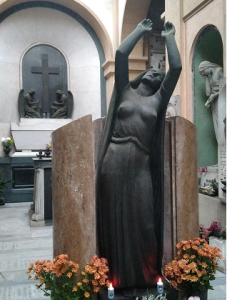
Staglieno Cemetery. Photo by Federica F.
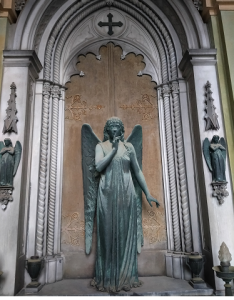
Staglieno Cemetery. Photo by Federica F.
The Staglieno cemetery, built in compliance with the imperial edict promulgated many years earlier, was designed by the architect Carlo Barabino and his protege, Giovanni Battista Resasco, and was officially inaugurated on the first of January 1851. It was expanded and remodeled over time and currently covers an area of about 330,000 square meters. There are sections for Jews, Greek Orthodox, Protestants (the British Cemetery) and Muslims. The monumental cemetery is enriched by long arcades that boast majestic 19th and 20th century marble sculptures fashioned by illustrious Italian artists, such as Giovanni Battista Cevasco, Santo Varni, Vittorio Lavezzari, Giovanni Scanzi whose splendor awes visitors.
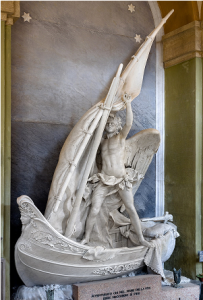
Staglieno Cemetery. The steering angel, sculpture by Giovanni Scanzi
Among the most important monumental tombs is the Angel of the Resurrection positioned to guard the sepulcher of the Oneto family. Sculpted by Giulio Monteverde in 1882, this angel of icy beauty has rightfully become the “official” face of the Staglieno cemetery.
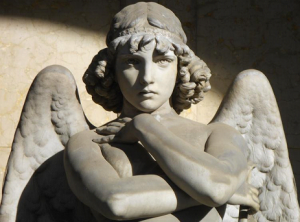
Staglieno Cemetery. The Angel of the Resurrection (detail) from the Oneto family tomb
Members of the British musical group Joy Division chose Staglieno’s works for two of their albums from 1980. On the covers of the single Love Will Tear Us Apart and the LP Closer appear two black and white photographs which immortalize two statues from the Genoese cemetery: the first portrays the angel of the Ribaudo family, created by the sculptor Onorato Toso in 1920. The angel with female features is lying on a sarcophagus bearing the Egyptian symbols of eternal life. The second photo captures the Deposition of Christ of the Appiani family, by sculptor Demetrio Paernio (1910).
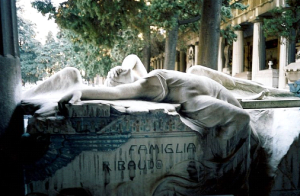
Staglieno Cemetery. Tomb of the Ribaudo family
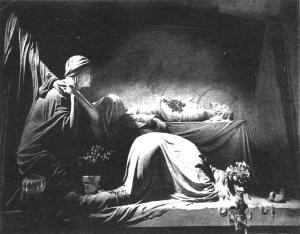
Staglieno Cemetery. Tomb of the Appiani family as appears on Joy Division’s LP “Closer”
The story linked to the tomb of Caterina Campodonico, the work of the sculptor Lorenzo Orengo, who was commissioned in 1881 is quite peculiar. After separating from her abusive husband, Caterina was denounced for “abandoning” him, and to make ends meet, she began working as a street vendor of hazelnut necklaces and shortbread cookies. When she fell ill and realized that she had little time left to live, she decided to spend the earnings of her work on the construction of her funeral monument. It faithfully reproduces the features of Caterina and a poem in the Genoese dialect dedicated to her by the poet Giambattista Vigo is engraved on the column. The presence of a monumental tomb belonging to a woman of humble origins, who secured a place in eternal memory among the local nobility and affluent bourgeois through the proceeds of her hard work, she inspires curiosity and sympathy in many visitors to Staglieno, who still today bring flowers, candles and small seashells as gifts to Caterina’s memorial.
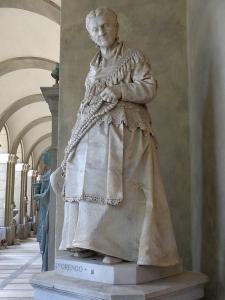
Staglieno Cemetery. Tomb of Caterina Campodonico
Illustrious personalities from the Ligurian capital and beyond are also buried in the Staglieno cemetery – the founding father of the Italian homeland Giuseppe Mazzini and numerous Garibaldians who took part in the Expedition of the Thousand; Senator Nino Bixio, one of the most important personalities of the Italian Risorgimento; the Prime Minister and partisan Ferruccio Parri; the poet Edoardo Sanguineti; the writer and journalist Constance Mary Lloyd, wife of Oscar Wilde; the singer-songwriter Fabrizio De André; the set designer Emanuele Luzzati. These are just some of the names of the numerous personalities from history, politics, art and entertainment who have found their eternal resting place in Staglieno.
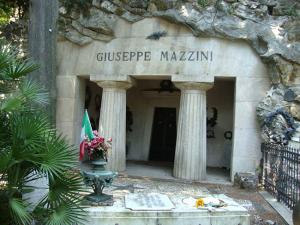
Staglieno Cemetery. Tomb of Giuseppe Mazzini
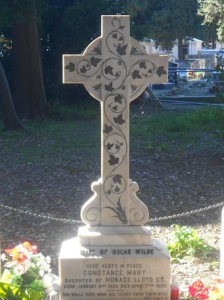
Staglieno Cemetery. Tomb of Constance Mary Lloyd
The monumental cemetery of Staglieno is a place of great charm, steeped in funereal romanticism. In this space of silent sacredness architecture, sculpture and nature intertwine in a kaleidoscope of innumerable, eternal memories, all finally united in the embrace of Death.
Text by Federica Fiume and translation from the Italian by Dr. Andrew Chesnut
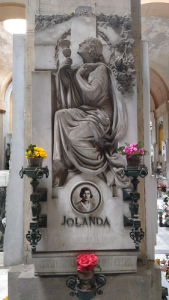
Staglieno Cemetery. Photo by Federica F.




